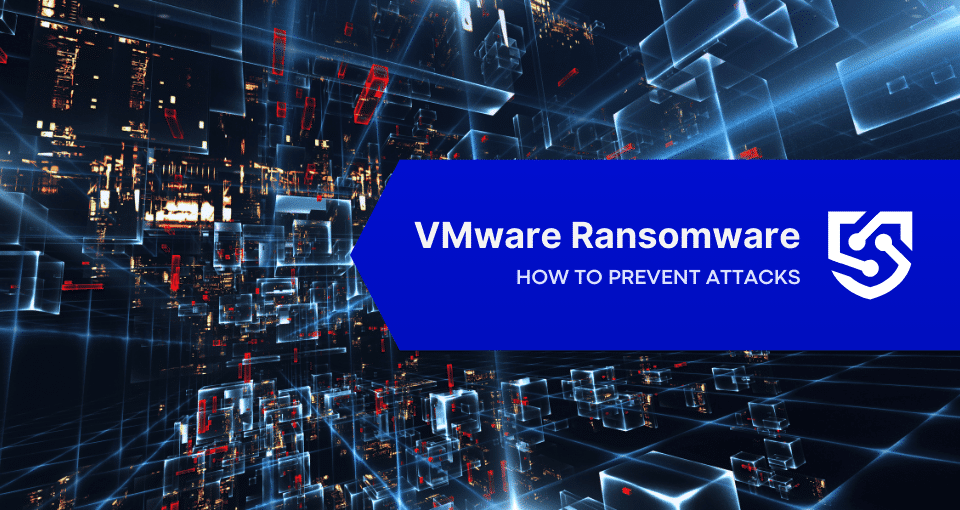Protecting VMware vCenter Server and VMware ESXi against ransomware is critical since the widespread adoption of virtualization technology made it attractive targets for cybercriminals seeking to extort victims for financial gain.
Ransomware attacks targeting vCenter Server and ESXi can have devastating consequences, potentially leading to the encryption of virtualized workloads, data loss, operational disruptions, and financial losses for organizations. Given the centralization and criticality of these components, it can compromise an organization’s entire virtual infrastructure, affecting business-critical operations, services, and applications.
Safeguarding vCenter Server and ESXi against ransomware is essential to ensuring virtualized environments’ continuity, security, and integrity. This enables organizations to mitigate risks, protect critical assets, and maintain business resilience in the face of evolving cyber threats.
VMware ransomware attacks
Recent incidents highlight the severity of the threat, with various ransomware groups demonstrating a growing interest in targeting vSphere environments. These attacks exploit vCenter Server and ESXi vulnerabilities, leveraging sophisticated techniques to infiltrate, encrypt, and disrupt virtualized workloads and infrastructure components.
Ransomware variants such as ESXiArgs, BlackBasta, and BlackCat have been specifically designed to target ESXi hypervisors, encrypting critical virtual machine files and disrupting operations. Ransomware-as-a-service (RaaS) models have facilitated the proliferation of these attacks, enabling cybercriminals to access advanced tools and techniques for targeting vSphere environments.
Examples of VMware ransomware attacks
- ESXiArgs Ransomware: Exploiting the CVE-2021-21974 vulnerability, attackers targeted VMware ESXi servers, disabling virtual machines and encrypting critical files such as .vmxf, .vmx, .vmdk, .vmsd, and .nvram files.
- Clop Gang Attack: The Clop gang, known for large-scale attacks, targeted vulnerable Fortra GoAnywhere file-transfer services using CVE-2023-0669. They also utilized a Linux version of their ransomware, specifically adapted to target Oracle database folders.
- Black Basta Ransomware: This ransomware variant is designed to attack ESXi hypervisors. It uses the ChaCha20 algorithm in multi-threaded mode to minimize encryption time, which is particularly effective in multiprocessor ESXi environments.
- Conti Group Ransomware: Before its breakup, the Conti group developed ransomware targeting ESXi hypervisors. As Conti’s code was leaked, these developments are now accessible to a wide range of cybercriminals.
- BlackCat Ransomware: Written in Rust, this ransomware variant can disable and delete ESXi virtual machines, presenting a significant threat to virtualized environments.
- Luna Ransomware: This cross-platform ransomware could run on Windows, Linux, and ESXi systems, demonstrating the versatility of ransomware threats across different environments.
- LockBit Group Ransomware: The LockBit group began offering ESXi malware versions to affiliates, further expanding the range of ransomware targeting VMware environments.
Prevent ransomware attacks on VMware systems
Preventive measures can significantly reduce the risk of ransomware attacks on VMware systems, safeguarding critical infrastructure and data against potential threats.
In the case of cyber attacks, companies and organizations should apply their incident response plan.
To prevent ransomware attacks on VMware systems, implementing the following measures:
1. Segmentation and isolation
You can ensure data security by separating the vSphere infrastructure from workloads and clients. The segmentation can prevent lateral movement of ransomware within the environment.
2. Security tools and updates
Regularly installing security updates and patches for vSphere components is essential to address known vulnerabilities and strengthen the overall security posture.
Deploying Endpoint Detection and Response (EDR), Extended Detection and Response (XDR), and Security Information and Event Management (SIEM) solutions also help detect and respond to ransomware threats.
3. UEFI secure boot
UEFI stands for Unified Extensible Firmware Interface. It’s a low-level firmware that initializes the hardware and loads the operating system on your computer. Secure Boot is a security feature within UEFI that verifies the digital signature of the software trying to load before it actually runs.
Ransomware often tries to infect a system during the boot process by replacing legitimate startup files with malicious ones. Secure Boot verifies software before the operating system loads, so it can stop ransomware from loading its malicious code in the early stages of the boot process.
Ransomware removal and recover
Ransomware attacks come in various forms, requiring a customized approach to removal.
While the specific steps may differ depending on the network, infected machines, data types, and ransomware variant, the core process generally follows these steps:
- Identification: Our security professionals will first identify the specific ransomware strain that has infected your system.
- Damage Assessment: The extent of the damage caused by the attack will be thoroughly evaluated.
- Attack Origin: Experts will investigate how the initial infection occurred.
- Removal and Patching: The ransomware will be removed from your system, and any vulnerabilities exploited by the attack will be patched to prevent future intrusions.
- Data Decryption: Whenever possible, encrypted data will be unlocked to restore your files.
It’s important to remember that this is a general outline. Once you contact Proven Data’s ransomware removal experts and initiate the service, the specific steps will be tailored to your unique situation, considering your network, machines, data, and the specific ransomware variant involved.







